My husband is a big fan of Mexican green tomatillo salsa. As I was struggling to grow vegetables in our small Pittsburgh yard, he suggested I give tomatillos a try. I was skeptical, but I got a couple of tomatillo plants and planted them by the driveway. One flourished and the other did not. I read that you need to have at least two tomatillo plants for cross pollination, so I bought another and soon I had two plants full of tomatillos and later in the season we made salsa. Over the years my tomatillo farm has expanded, and now it takes up a good chunk of the garden above my retaining wall. The plants seem to do well in Pittsburgh weather, and for whatever reason, the critters in my garden seem to mostly leave them alone. I’ve learned to let them grow in pots on my deck until they are about 18 inches high so the young leaves don’t get devoured by beetles. And spraying them with insecticidal soup also helps keep the bugs away. Once they get to about two-feet tall, they seem to do fine. I typically plant about 6 of them now, and I get a few volunteers growing besides them.

By August, my tomatillo farm is a mess. Most of the plants have outgrown their cages, and some have toppled over and resist my efforts to upright them. This year the adjacent tomato plants have taken over, with lots of volunteers as well. Note to self: next year pull out most of those volunteer tomatoes!

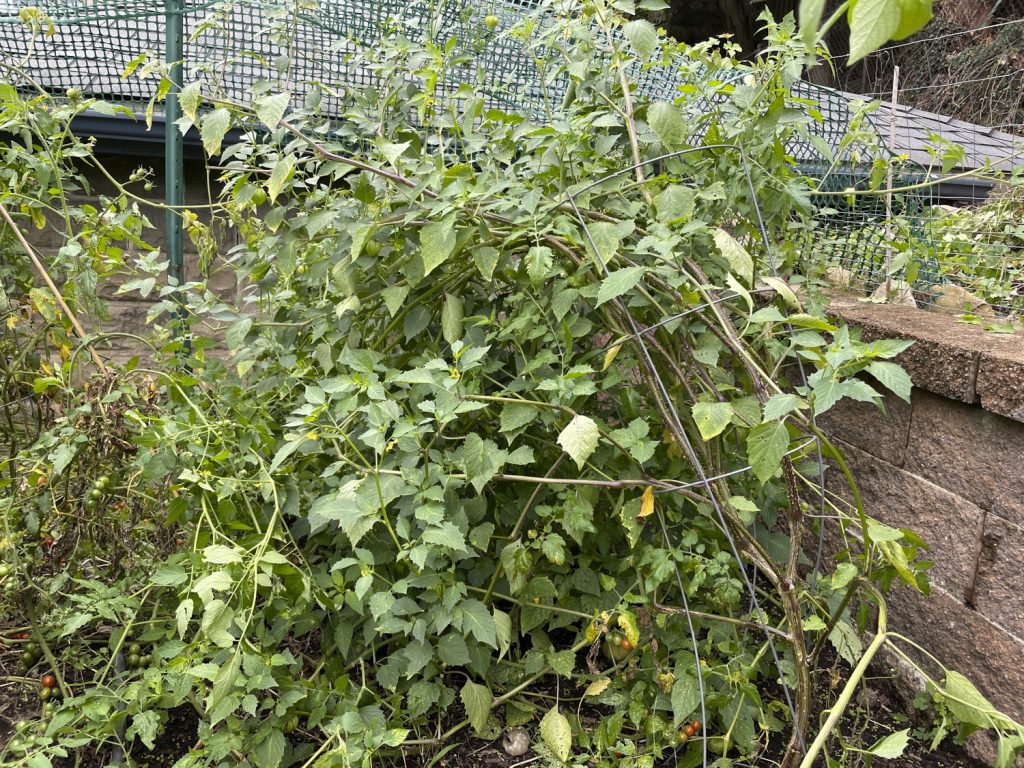
Tomatillos grow in little husks. They are ready to harvest when they fill their husk. Sometimes you can tell they are ready because the bottom of the husk has burst open, revealing bright green or purple fruit. Sometimes you have to gently squeeze the husk to figure out whether it is full. I also collect the fruit that falls off the plan and the fruit growing on branches that have been severed from the plant. The plants grow taller than me, and finding all the ripe fruit requires crawling around under a canopy of tomatillo leaves, buzzing with pollinators.
Last year I grew over 30 pounds of tomatillos and this year I’m on track to grow a similar amount. Last week’s harvest was 6 pounds, and this week’s harvest 12. Over the years I’ve experimented with a variety of tomatillo recipes: I’ve pureed them raw, I’ve boiled them, I’ve sauted them, and I’ve roasted them. My current favorite recipe involves roasting all the vegetables together in 3-pound batches and pureying them in my blender. Here are some photos of the process, with the recipe at the bottom of the page.
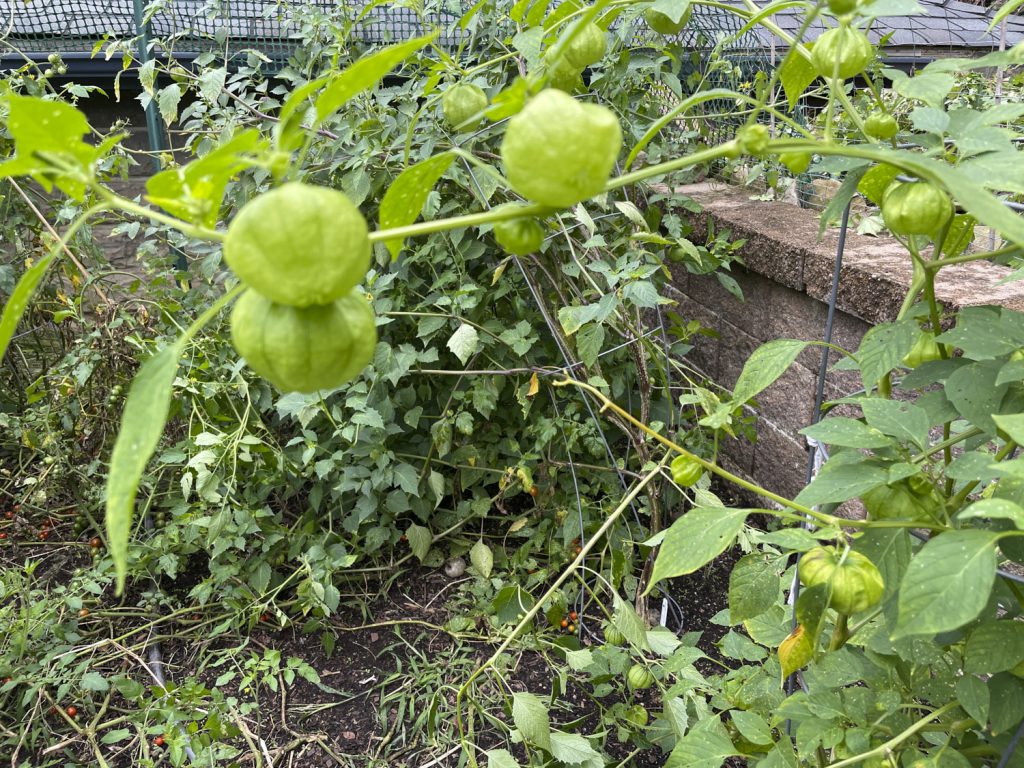
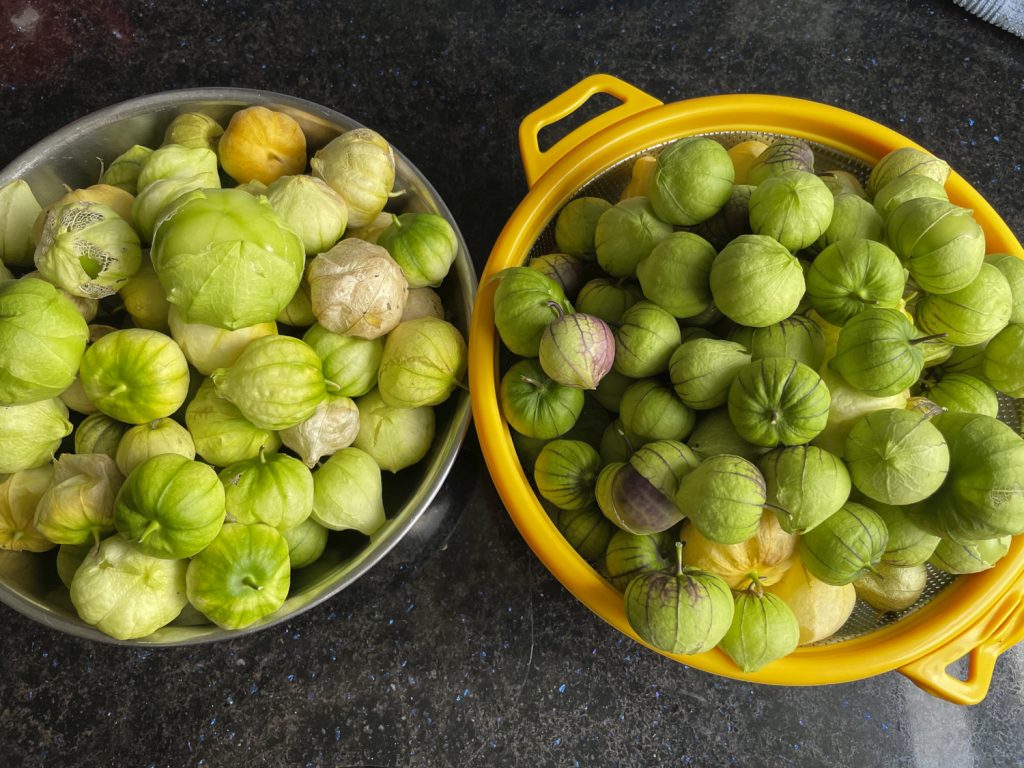
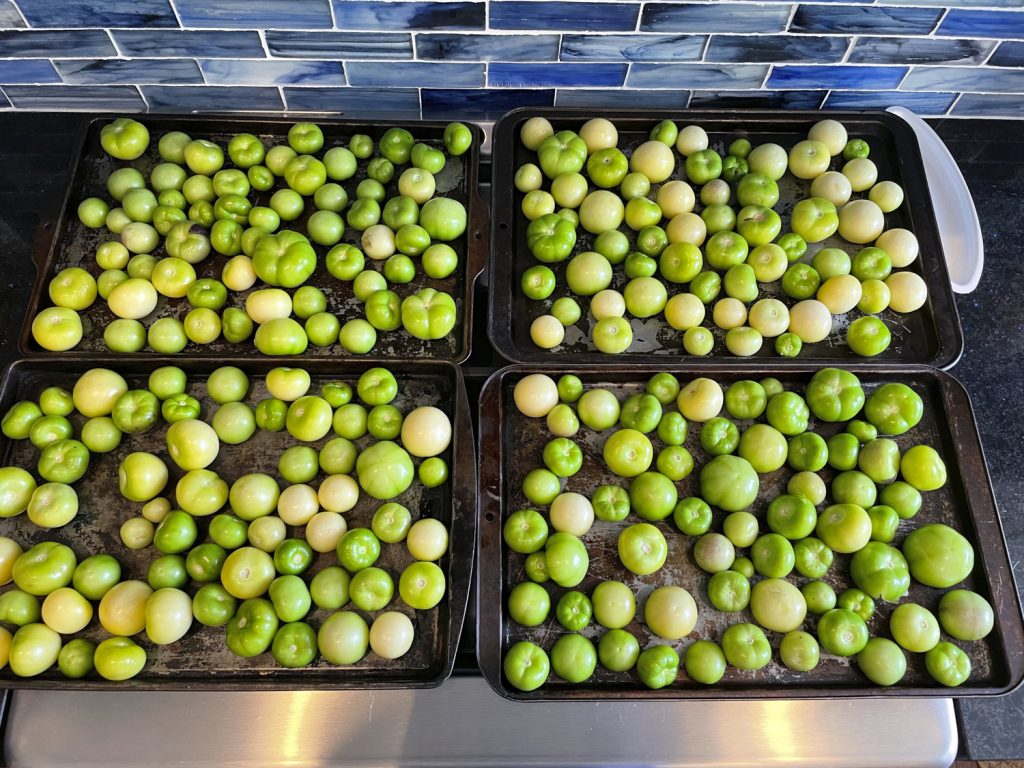
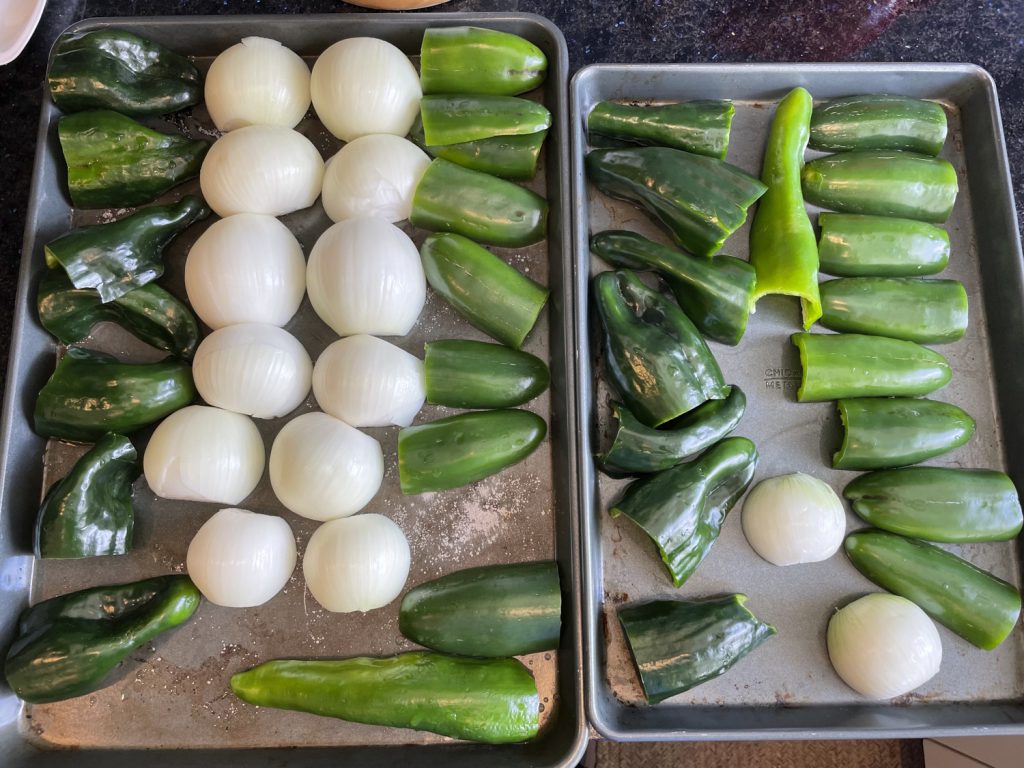
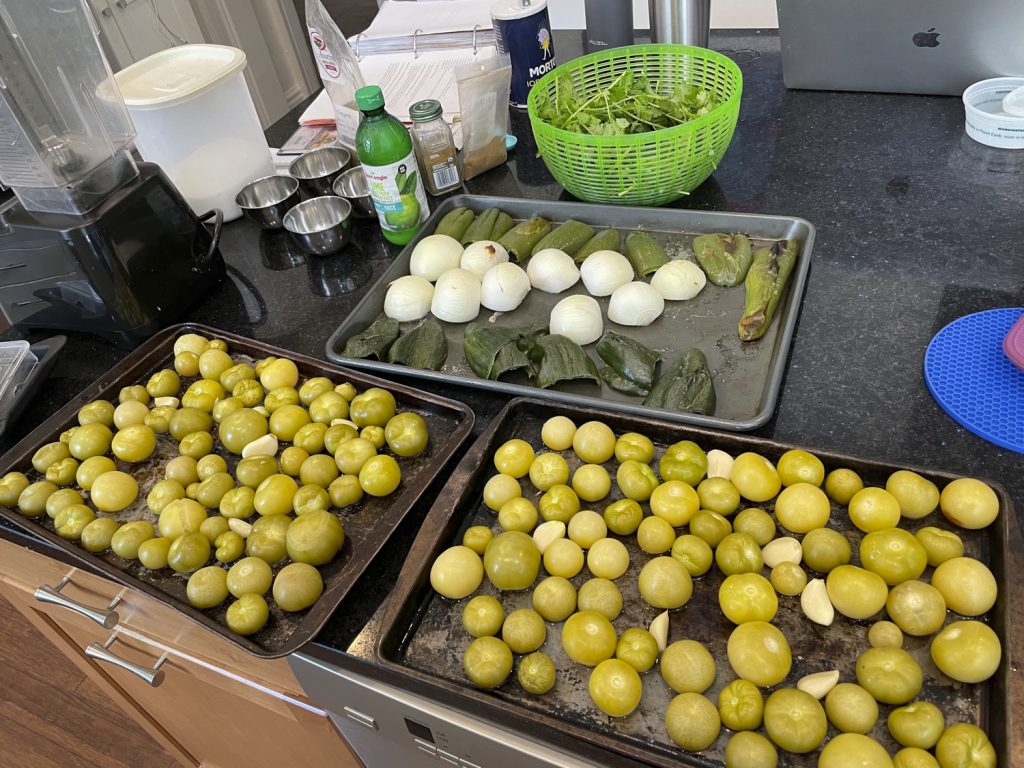
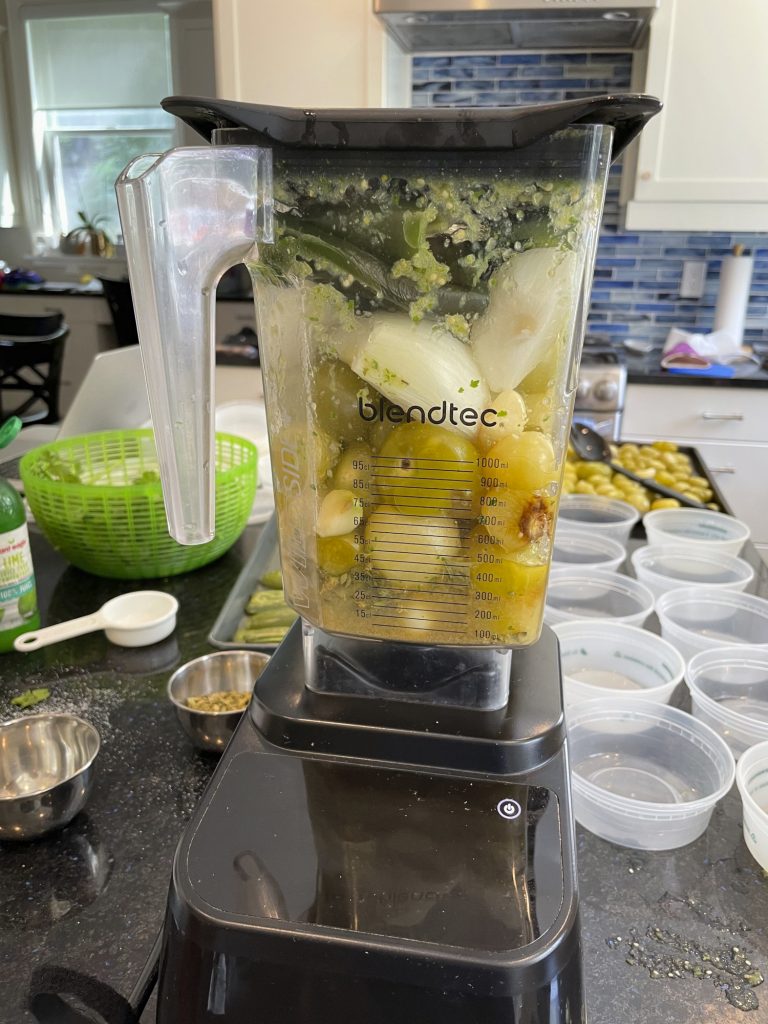
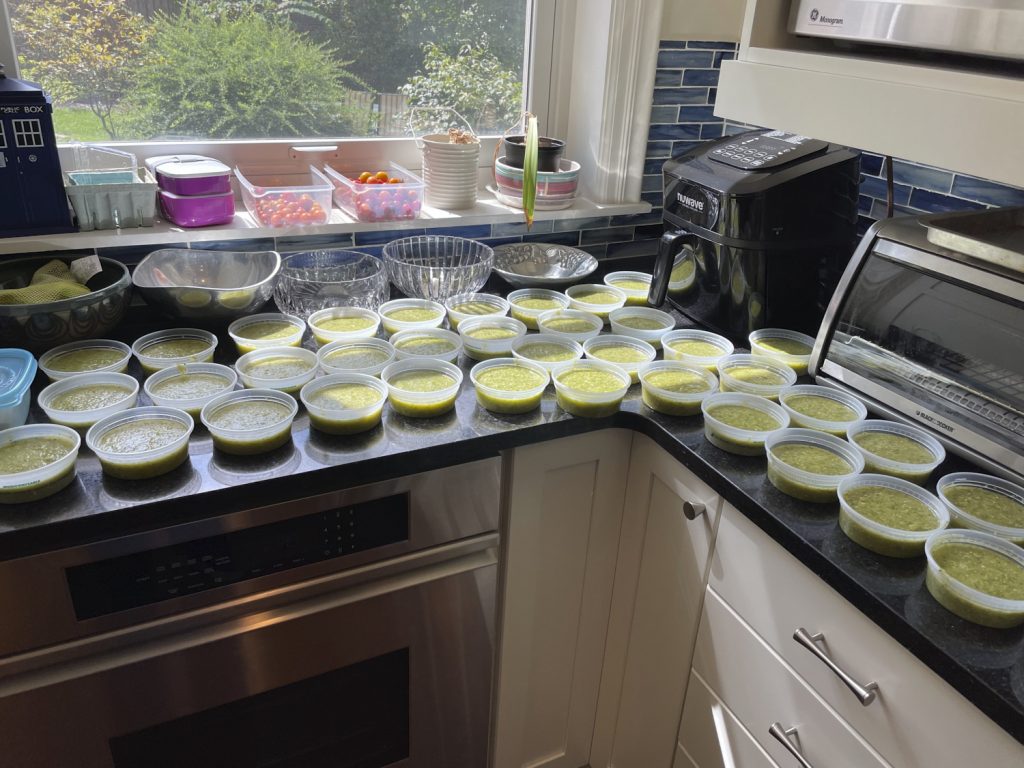

So the next question is what do you do with 40 6-oz containers of tomatillo salsa? We put most of it in the freezer to eat all winter and share with friends. We used it to dip chips, put it on fish tacos, and use it as enchilada sauce. One of my friends said it made a tasty pasta sauce too. It has a tangy taste with just a small bit of heat (but of course you can make it hotter).
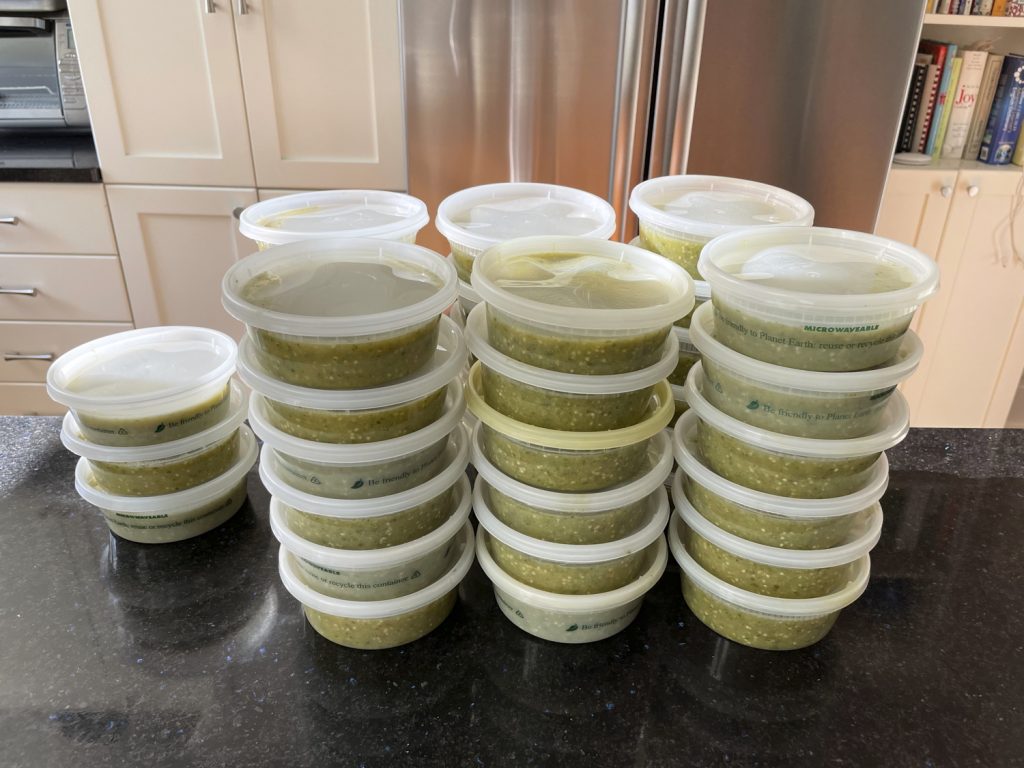
Roasted Tomatillo Salsa Verde [PDF]
3 lbs tomatillos, husks and stems removed, rinsed
6 cloves garlic
1 large onion or 2 small-to-medium onions, halved
2 Anaheim, poblano or similar medium-hot peppers, seeded and sliced into a few strips
1-2 serrano or jalapeno peppers, seeded and sliced into a few strips (for spicier salsa use more, peppers, spicier varieties of peppers, or don’t remove the seeds)
½ to 1 bunch cilantro (1-2 cups)
1 teaspoon sugar
1.5 teaspoons cumin
3 teaspoons dried Mexican oregano (regular oregano can be substituted but reduce to 2 teaspoons)
½ teaspoon salt
¼ cup lime juice
- Preheat oven to 500 degrees
- Place tomatillos, garlic, onions, and peppers on 2-3 medium baking sheets and roast for about 20 minutes until tomatillos and peppers are charred and oozing juices. Make sure the garlic roasts between tomatillos so it doesn’t burn.
- Take vegetables out of the oven and let cool for at least 10 minutes
- Place roasted vegetables and all other ingredients in blender jar and mix on medium setting to chop, but not puree. Depending on your blender and how chunky you like your salsa you may be able to just run the blender for 5-20 seconds, or you may need to pulse it about 10 times. With my Blendtec blender I like to put in all the ingredients except the cilantro and blend for 5-6 seconds. Then I add the cilantro and blend for 5-6 seconds more.
Makes about 7 cups of salsa, which can be poured into about 10 6-oz containers and frozen.
This salsa is pretty mild. If you like it spicy add more hot peppers. This quantity will fit in a regular Blendtec Wildside+ blender jar but for many standard home blenders this is more than will fit. If you have a smaller blender jar, divide ingredients proportionally and blend in batches. It is easier if you blend each batch together with all its ingredients rather than try to mix batches together later (e.g. blend half the tomatillos, half the peppers, etc. in one batch).
